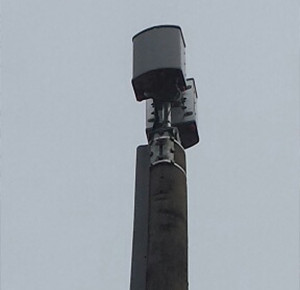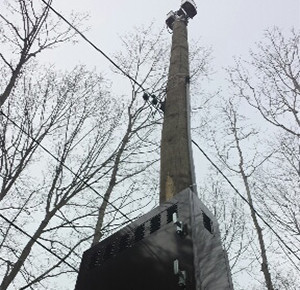If you’ve read the Proposed Draft Ordinance for Matinecock Village,or the Summary, not only do you have a sense of how many factors there are to consider before saying yes to this contract, but also how important it is that the Village have a game plan for assessing additional applications for wireless installations in the future. Here are some key concerns to consider about the proposed DAS installations, prior to next Tuesday’s hearing– all of which would be addressed by an ordinance:
1. Proper monitoring of the DAS system, for safety.
a. Could these poles come down in a hurricane like Sandy? If damaged, could they cause fire, explosion, or danger to life and property? (see this link to an article about overloaded utility poles that snapped and fell to the ground under heavy winds, causing the 2007 Malibu Canyon fire)
An ordinance would require CC to provide the Village with evidence of safe monitoring, yearly. It would also require an engineer to certify the poles are structurally sound, every 3 years.
b. If there’s damage to property, or personal injury as a result of the poles, are we insured? If some become unsafe, will CC discontinue service and immediately remove the installation in question? An ordinance would spell out these requirements.
2. Knowledge of which specific carriers Crown Castle will be adding to the DAS boxes in the future.
Will it be WiFi, the controversial Smart Grid system, WiMAX, or another cell phone carrier? An ordinance would require CC to submit an application to the Village each time it wants to add a carrier to the box. Residents would know exactly which technology is going in, and when
3. Setbacks designated for antennas installed near private homes.
With no regulation on the part of the Village, CC could place future nodes within 20 feet or less of a resident’s bedroom. An ordinance would require a setback of at least 250 feet for the DAS in a residential setting, and 750 feet for a cell tower.
4. Collocation of antennas by placing them on already existing structures so that they aren’t spread randomly throughout the community.
An ordinance would require this. It would require that placing antennas in residential areas be considered last, after collocation, commercial or industrial areas, and other nonresidential zoning districts.








